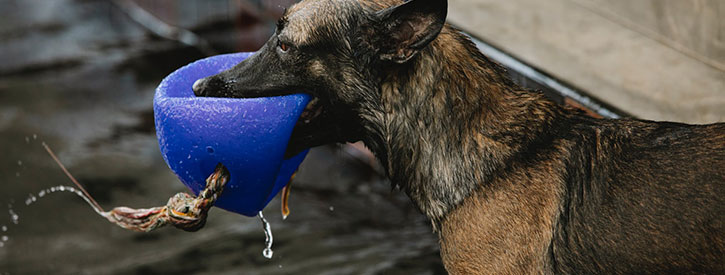
November 21, 2017
Every year, approximately 4.5 million people in the US alone are affected by dog bites, with the majority of its victims the children and the elderly. With that said, it is crucial we are well-informed and prepared to do the research and apply advice from the experts how to prevent dog bites. In the event if this situation does occur, it is important to know the steps to handle to diffuse the situation quickly and effectively. Below we’ll explain in further detail why dogs attack, how to detect warning signs, how to avoid dog bites, and the importance of teaching our children how to handle such circumstances.
Why Do Dogs Attack?
Before we go into further detail about how to avoid potential dog bites, we must understand the core reasons as to why dogs bite occur in order to help better prepare ourselves. There are a number of reasons why dogs can attack. The reasons vary from feeling threatened, stress, or not enough exercise resulting in pent up energy. Domination may also be as result of dog aggression, when the dog and owner have not established who is boss effectively. It is high priority every dog owner establishes boundaries, discipline, and leadership with their canine pets to avoid situations like this from happening.
Detecting Warning Signs
Picking up on some of these early warning signs may prevent a canine from snapping and potentially save your life. Listed below are some of the most common signs a dog may feel threatened or about to strike. Pay close attention to dogs’ body language – it may give you all the warning signs you need.
– Stiff tail
– Wagging still tail
– Rigid/Tense body
– Hair on fur standing
– Yawning, licking lips
– Intense eye contact
– Growling
– Baring teeth
– Erect, flattened back ears
How to Avoid Potential Dog Bite
Do not panic or scream. This may sound easier said than done, but dogs can sense fear and panicking may encourage further attack if you threaten them with screaming or yelling.
-Be motionless. As the dog approaches, avoid eye contact and stand straight and rigid like a tree with your arms at your sides, acting motionless.Turn your body so that it is sideways to the dog but keep him or her in your peripherals.
-Don’t run. This may trigger a dog’s instinct to chase after prey.
–Distract the dog. Offer the dog something to chew on that you have on you, such as a water bottle, shirt, sweater, or backpack. This may give you enough time to slowly back away from the situation.
Teach Your Children Dog Precautions
Because the bigger majority of canine attacks are children, it is absolutely necessary to educate them on the basics of how to interact with dogs and how to avoid dog bites.
– Absolutely no dog petting or touching without being under the supervision of an adult.
– Teach children to respect a dog’s personal space. Children who approach or go near dogs who are restrained or tied up to a fence, pole, doghouse, etc. can cause stress and threat to the dog’s territory and increase the probability of a dog to bite.
– No rough play. Playing with a dog too aggressively can trigger higher levels of energy and cause the dog to react aggressively in result.
– No hugging. Do not allow your children to expose their face and neck so close to a dog’s face. Any sense of threat can lead to serious harm.
– Startling a dog can trigger a quick reaction as the dog becomes on high alert and confusion whether it can trust you. It is best not catch the dog off-guard or startle them while they are asleep.
Although we cannot predict or prevent all dog bites, it is best to be educated and as prepared as possible when or if we are ever in danger of a potentially harmful situation. Educate your children to be just as prepared and learning how to handle dangerous scenarios such as a dog attack can prevent a lot of trouble for everyone involved.




